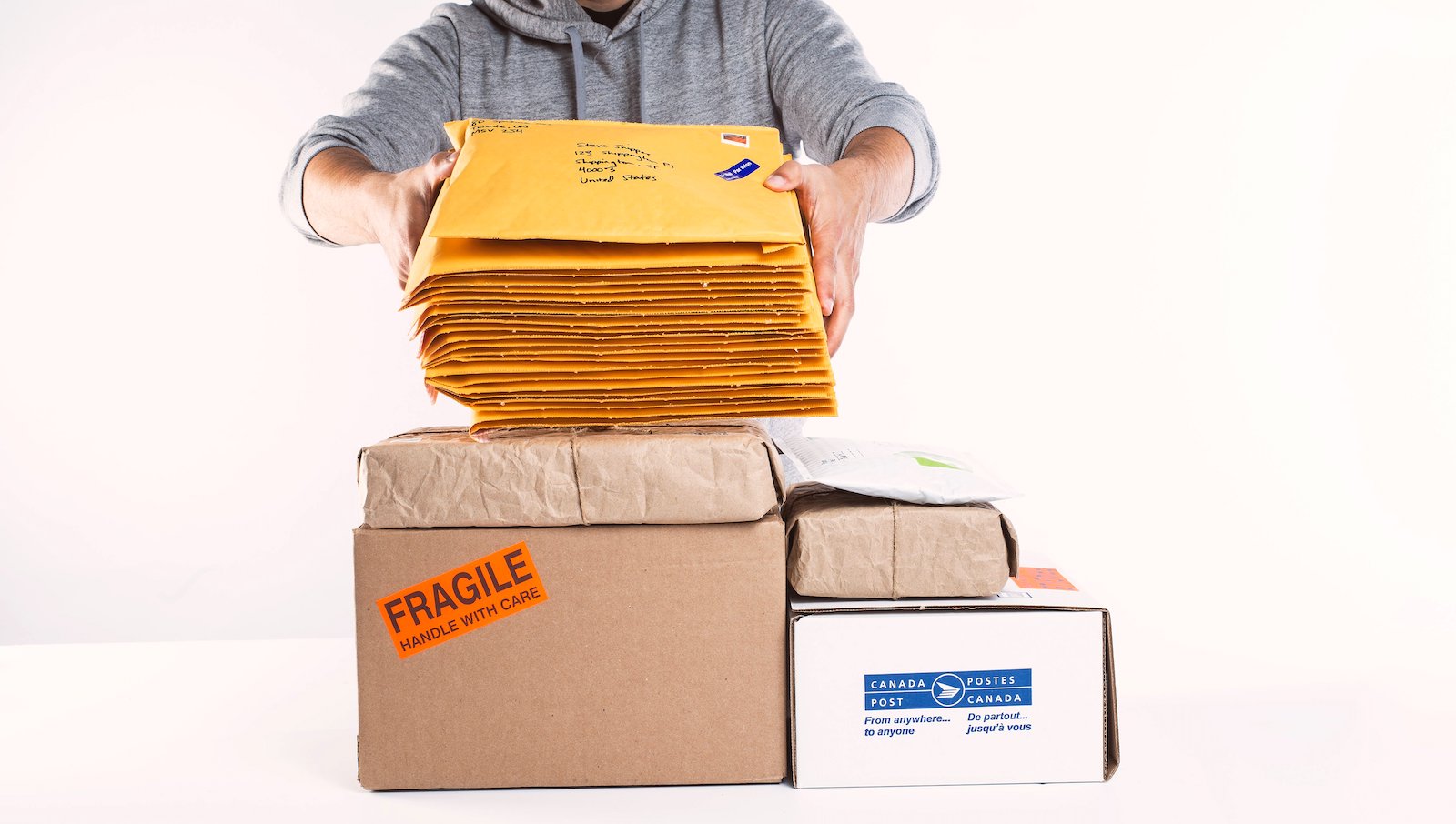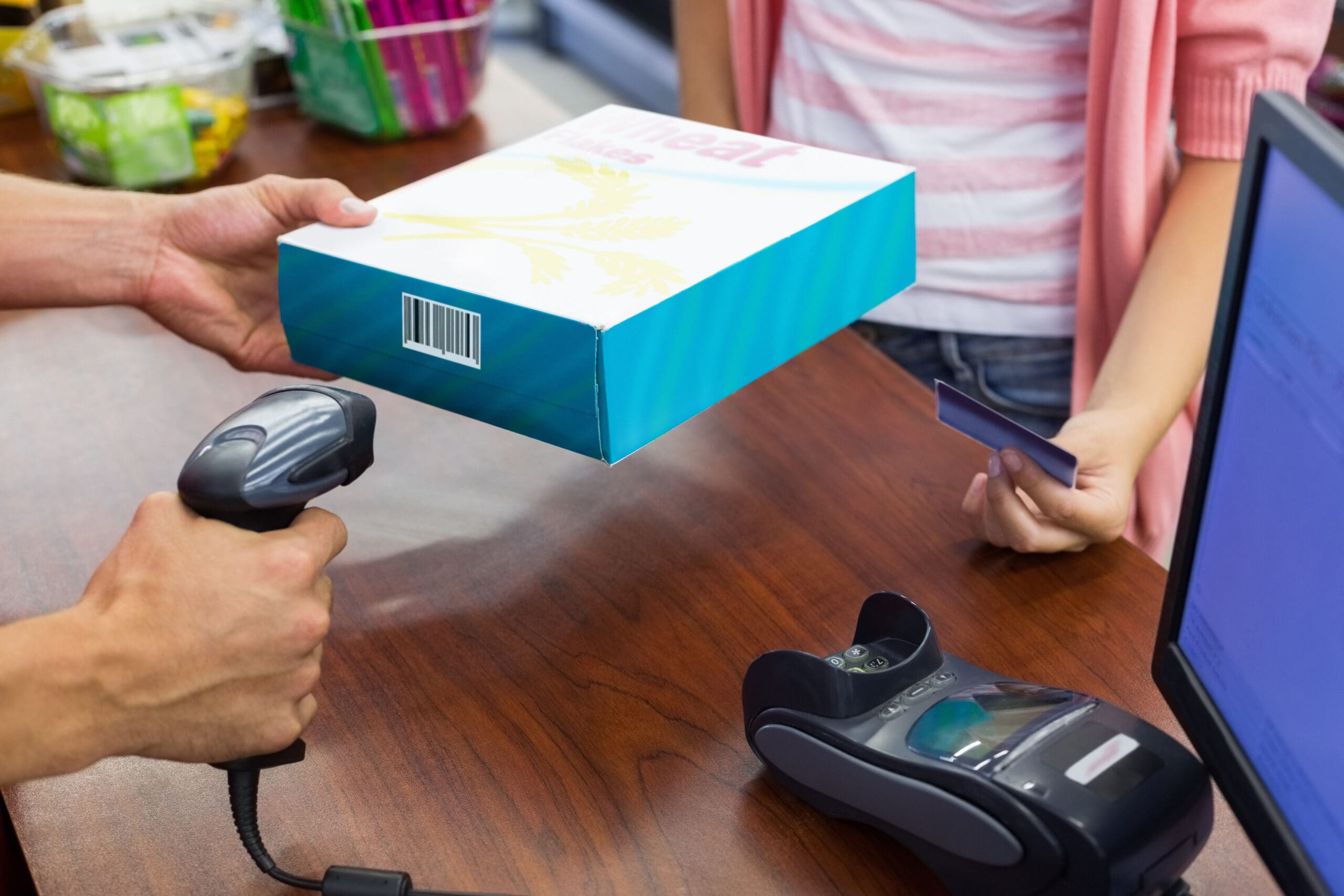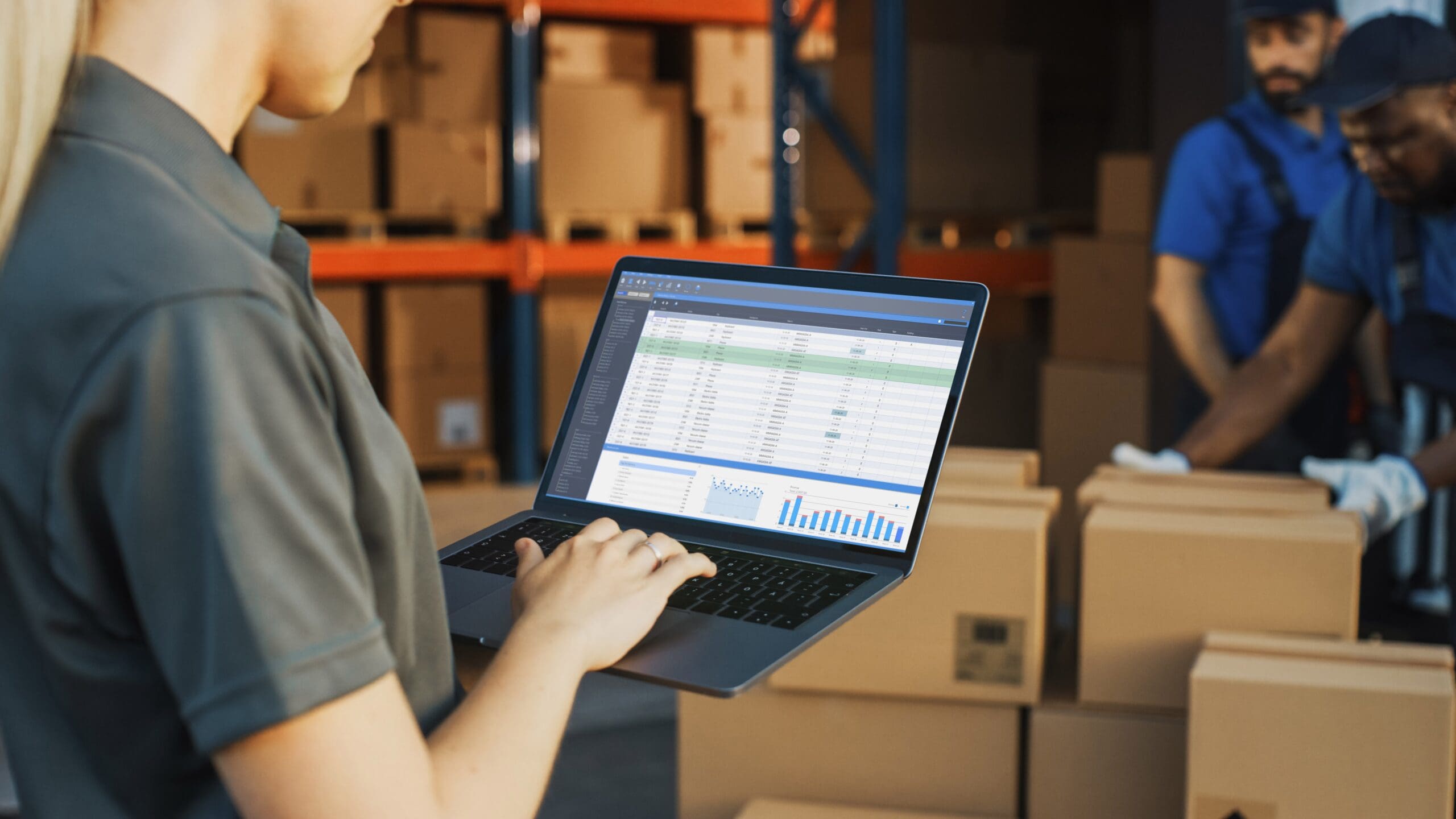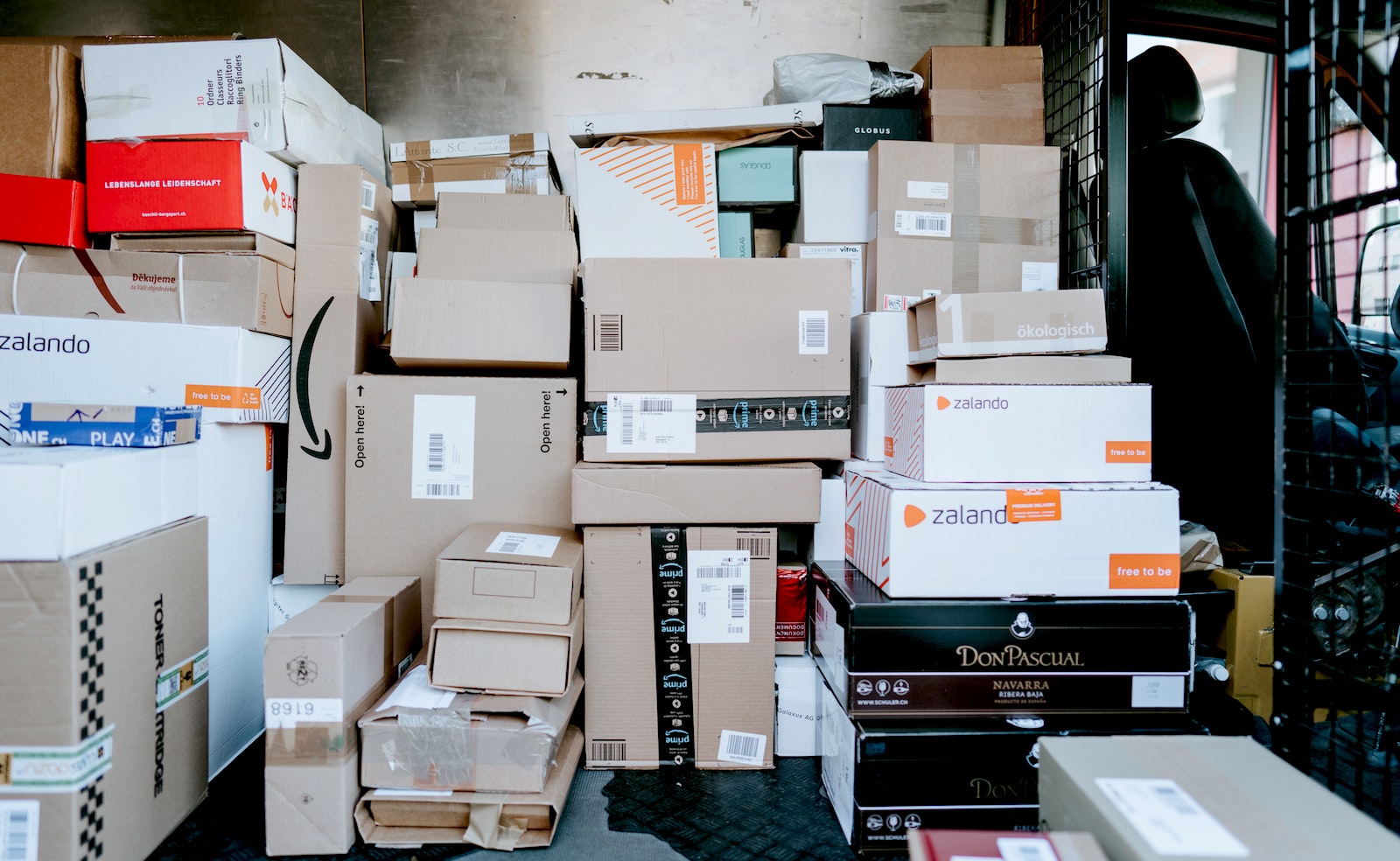Table of Contents
** Minutes
What is Shopify Fulfillment Network?
How fulfillment can make or break your Shopify shop
The 3 main fulfillment options a Shopify store owner has
Shopify Fulfillment Network: pros and cons
The 3 best Shopify fulfillment services
How to set up ShipBob on your Shopify site
Maximize your Shopify fulfillment operations with ShipBob’s WMS
With over 2.7 million online stores in the US alone, Shopify is one of today’s largest ecommerce platforms. Because of its popularity among online businesses, Shopify has nuanced functionality, integrations, programs, and partnerships to help improve the merchant experience and increase customer satisfaction.
From the introduction of Shop Pay, Shopify’s streamlined, accelerated checkout experience, to the TikTok app for Shopify, Shopify keeps a finger on the pulse of what’s going on in the ecommerce world to ensure merchants stay competitive and successful.
In their quest to offer solutions for ecommerce businesses, they offer a fulfillment solution to ecommerce brands in the form of Shopify Fulfillment Network, or SFN.
While Shopify’s fulfillment solution has its strengths, it isn’t for everyone. It’s important to make an informed decision when choosing a fulfillment provider so your logistics operations don’t slow down growth and cut into profit margins.
In this guide, we’ll provide insights into Shopify’s fulfillment solution so you can make the best decision for your business. We’ll cover:
- Different Shopify fulfillment options available to you
- How Shopify fulfillment works
- Top Shopify fulfillment services
- Benefits of partnering with a third-party logistics (3PL) partner
What is Shopify Fulfillment Network?
Shopify Fulfillment Network (SFN) is Shopify’s fulfillment service that brands can use to store inventory and fulfill customer orders. Launched in 2019, Shopify introduced SFN to offer fulfillment capabilities for ecommerce brands already using the online shopping platform. SFN has a network of fulfillment centers in the United States to fulfill domestic and international orders. Shopify works with USPS, DHL, UPS, Canada Post, and various regional mail carriers to deliver customer orders.
To use SFN your ecommerce business must sell to US customers, have an active Shopify Payments account, and meet Shopify’s eligibility requirements
How fulfillment can make or break your Shopify shop
Picture this: You’ve spent countless hours designing your Shopify website, setting up marketing campaigns, and designing custom packaging so you’re ready to start selling on Shopify.
But as soon as orders are placed, it’s up to you to figure out how to fulfill orders accurately and quickly to get them shipped. If an online store is unable to deliver customer orders in a timely manner, customers can easily find what they need somewhere else.
There is a lot to keep in mind when it comes to fulfillment. The entire process involves starting with Shopify inventory management and storing, then picking and packing items accurately, and shipping Shopify orders. If you fulfill orders yourself, then you will need to figure out how much packaging, software, shipping, and all of the other logistics will cost you.
Before you launch a Shopify store, be sure to consider how you will handle fulfillment, so you don’t spend too much time and money packing and shipping orders and get stuck in an endless cycle.
The 3 main fulfillment options a Shopify store owner has
1. In-house fulfillment
If you’re just starting out or don’t have the means to hire a staff and rent a warehouse, it is possible to fulfill orders yourself. While this gives you absolute control over every step of the supply chain, it can also take up too much time and drive up logistics costs as your business expands.
As brands grow online, it’s not uncommon to switch from in-house fulfillment to outsourcing fulfillment sooner rather than later. This allows you to leverage established fulfillment operations rather than investing in fulfillment infrastructure, including warehousing, labor, equipment, fulfillment software, and more.
Note: This option may be best if you’re selling locally only and primarily have in-store pickups.
However, there are reasons many brands continue to fulfill orders in-house. Brands that require considerable customization or have ample space to fulfill orders may opt in for self-fulfillment. As order volume increases, you need a warehouse management system (WMS) to help you streamline processes, show real-time data, and give your team the tools they need to quickly, and efficiently pick, pack, and ship orders.
2. Dropshipping
Dropshipping is the most hands-off fulfillment option, so it gives you much less control over the fulfillment process. If you opt for dropshipping, the order fulfillment process is entirely managed by the manufacturer.
Though there are pros and cons to dropshipping, this fulfillment method tends to have a much longer transit time (as products are often coming from Asia) and greater quality control risks since your customer is the first one to see your finished product.
“When we first got started, we were dropshipping. It was nice because we had no money tied up in inventory, but we also had no quality control.
With no control over the customer experience and very poor shipping times, we quickly realized dropshipping was not a long-term solution. It was good for proving out an early concept, but we had to move to a professional fulfillment company.”
Gerard Ecker, Founder & CEO of Ocean & Co.
3. Third-party logistics (3PL)
To save time and money while still maintaining control, many fast-growing Shopify stores partner with a 3PL.
Many 3PLs offer multiple fulfillment centers (including international fulfillment locations), leading technology that automates and streamlines inventory processes, and data and analytics that help you make better decisions across your supply chain.
A 3PL’s fulfillment center is designed and optimized to be as efficient and effective as possible, from the equipment they use to their use of space and technology to increase accuracy.
3PLs partner with shipping carriers to negotiate discounted shipping rates, which allows you to offer more shipping options. Best of all, you can tap into a 3PL’s technology, distribution network, and expertise, while not having to pack orders yourself.
“I shipped everything myself and made a lot of trips to the post office. It was intense and pretty tough. You quickly reach that breaking point, where you cannot do it any longer, and it’s not worth the compromised quality of life.
We did some market research, and I knew some other brands that used ShipBob. Everything just works. We are super happy with ShipBob and very impressed by how well they’ve pumped out our large volume of orders.”
Sergio Tache, CEO of Dossier
(Note: Shopify recently launched Shopify Fulfillment Network (SFN), which offers packing and shipping services. Acting as an on-demand warehousing solution, SFN partners with other warehouses and 3PLs to utilize their technology and operations.)
How Shopify fulfillment works
You’ve confirmed that your products are eligible for Shopify Fulfillment Network and you’re ready to set up your Shopify or Shopify Plus website so you can receive orders. What’s next? If you plan on using SFN for fulfillment, here’s what you can expect.
Choose and launch a Shopify plan
Shopify has various plans to suit the needs of all businesses. Shopify has a basic plan for individuals and small businesses ($39/month), a standard plan for businesses ($105/month), and an advanced plan for medium to large businesses ($399/month).
Enterprise-level businesses may want to explore Shopify Plus, which offers more nuanced features for $2,000/month.
After you’ve selected the best plan for your business, you can launch your store and begin setup with SFN.
Migrate your fulfillment data to SFN
Before you jump into fulfillment with SFN, you’ll want to audit your current fulfillment setup to make sure you’re ready for a new system. You’ll want to take note of your current number of products, SKUs, and inventory levels to understand what you have on-hand and the transfer process will go smoothly.
Then, you’ll want to add products and create an inbound transfer in the SFN app. You’ll assign SKUs and barcodes to your products.
Select and route orders to your preferred fulfillment centers
Finally, you’ll pack and label your products so they can be sent to the SFN fulfillment center. You’ll be given a location to send your inventory in the SFN app. Depending on the quantity of your inventory, your inventory will be split across the Shopify Fulfillment Network so it’s located closer to end customers.
Shopify Fulfillment Network: pros and cons
Below we compare ShipBob to the Shopify Fulfillment Network.
Features | ShipBob | Shopify Fulfillment Network |
| Fulfillment experience | Has operated fulfillment centers of its own since 2014 and currently has over 50 fulfillment centers in its global network. ShipBob created and owns its proprietary warehouse management system software, which is used across all of its fulfillment centers. ShipBob is trusted by thousands of Shopify brands. | Announced their fulfillment network in 2019 and outsources fulfillment to different 3PLs and uses each 3PL’s WMS. |
| Order volume and ideal merchant size | ShipBob has fulfillment solutions for brands of all sizes. The Growth Plan for startups is suited for brands shipping less than 400 shipments per month. ShipBob also supports enterprise-level business. | SFN works with brands that ship between 10 and 200 orders per day (or 84 – 10,000 orders/day). They only work with brands with under 2,000 SKUs. |
| Products fulfilled | Can generally fulfill products that carriers can ship, including products that require serial, lot, or batch tracking, or a first-in-first-out (FIFO) inventory policy. You can find ShipBob’s acceptable products and use policy here. | Doesn’t work with beauty or medical items, any regulated or perishable products, and those that need lot tracking. SFN prohibited items include hand sanitizers and CBD products. See their full list of product eligibility here. |
| Pricing | ShipBob’s outsourced fulfillment solution has direct pricing. You have one fee for each order fulfilled (no separate line items for packing supplies and picks are included up to the first 4 items). Monthly billing includes storage and inbound receiving (see more here). | Shopify Fulfillment Network is set up as one price that includes inbound, packing, and receiving. Domestic fulfillment pricing is determined by the billable weight of the SKUs being sent. See their fulfillment cost calculator here. |
| Countries available | ShipBob works with businesses across the globe and has 50+ fulfillment centers in the United States, Canada, UK, EU, and Australia. | Only for businesses that sell in the United States and only has fulfillment centers in the US. Shopify Fulfillment Network closed SFN operations in Canada as of July 14th, 2023. |
| Onboarding process | Very fast with the average implementation taking less than 30 days, though some get onboarded in as soon as 3 days. | You have to apply and get accepted to move forward with SFN. There is no clear timeline listed on their site. |
| B2B fulfillment | Can seamlessly handle B2B fulfillment for brands. ShipBob supports retail dropshipping and distribution for 100 approved B2B retailers (e.g. Walmart, Target, Ulta, Sephora, Chewy, etc.). | Shopify Fulfillment Network is compatible with sales channels that are integrated with your Shopify store including Facebook, Google, Instagram, Shop, Walmart Marketplace, and others. |
The 3 best Shopify fulfillment services
If you’re looking to outsource fulfillment, Shopify makes it easy to leverage fulfillment services provided by a third-party. Here is an overview of the leading Shopify fulfillment services to consider.
1. ShipBob
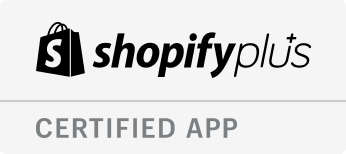

ShipBob fulfills orders for thousands of Shopify stores — more than any other fulfillment provider. ShipBob is an official Shopify Plus Certified App Partner and has the most advanced fulfillment technology on the market.
“The Shopify Plus Certified App program is designed to meet the advanced requirements of the world’s fastest growing brands. We’re happy to welcome ShipBob to the program, bringing their insight and experience in fulfillment to the Plus merchant community.”
Loren Padelford, GM of Revenue at Shopify Plus
With access to best-in-class fulfillment services, ShipBob partners with Shopify stores to put fulfillment on autopilot, offer faster and affordable shipping, as well the the ability to expand into new channels and markets.
ShipBob’s technology allows you to maintain visibility into the entire fulfillment process, track inventory in real time, filter all orders by status, view fulfillment and shipping performance insights, and much more.
ShipBob also partners with other leading ecommerce solutions and platforms like TikTok, Amazon, NetSuite, Gorgias, Happy Returns, and more, which makes it easy to connect ShipBob to your existing tech stack and enable an end-to-end ecommerce solution.
“For our website, we built it on Shopify, as we are very comfortable with them. Shopify and ShipBob work very well together. All I had to do was click a couple buttons and they were connected.
The integration and visibility of the two systems keeps everything very simple. I really like ShipBob’s dashboard. It’s our backend logistics that keeps us up-to-date on everything that’s happening.”
Tim Fink, Co-Founder of EnduroSport
Once integrated with your Shopify store, ShipBob plays a significant role in reducing shipping costs and improving last-mile delivery while saving you time on logistics.
As a global fulfillment provider with 50+ fulfillment centers across the globe, ShipBob can help you reach your international customers via global fulfillment. By leveraging ShipBob’s international fulfillment centers, you can place inventory in regions closer to your end customers, eliminating the need for international taxes and duties.
2. Red Stag Fulfillment
Red Stag Fulfillment provides services similar to ShipBob, but they specialize in shipping heavy items and oversized shipping. They offer easy integration with Shopify, as well as custom API. Red Stag’s fulfillment software is cloud-based, which allows you to access your data and reports from any device at any time.
Red Stag’s fulfillment services are ideal for businesses that ship heavy and/or oversized packages. Due to the care and costs involved with managing heavier products, Red Stag is good for businesses selling products that are outside of a small or lightweight scope.
Additionally, Red Stag’s fulfillment network is contained to the United States, which makes it a solution that is best suited for Shopify businesses that are based in the US and don’t ship internationally.
3. Amazon
Amazon’s Fulfillment by Amazon (FBA) program manages logistics for brands that list products on Amazon. FBA is only for products on Amazon that have the Prime status and is the most expensive fulfillment service option when selling on Amazon.
Amazon offers other alternatives to FBA, including Seller-Fulfilled Prime (SFP) and Fulfilled by Merchant (FBM), which involve someone other than Amazon (like a merchant or 3PL) fulfilling orders placed on the marketplace.
Note: ShipBob offers FBM services, which can help you diversify your fulfillment options to maximize sales. Learn why sellers have moved off of Amazon to ShipBob for FBM here.
To sell through multiple channels, Amazon also offers Multi-Channel Fulfillment (MCF). MCF inventory connects to your Shopify page and allows you to manage product listing and fulfillment from a single location.
How to set up ShipBob on your Shopify site
Fast-growing Shopify merchants have partnered with ShipBob to help meet customer expectations, reduce cart abandonment, and improve average order value.
ShipBob’s technology makes it easy to connect your Shopify or Shopify Plus store in minutes. Once your store is connected to ShipBob, you can ship inventory to one or more of ShipBob fulfillment center locations.
Once ShipBob receives inventory, orders placed on your Shopify store will automatically be sent to ShipBob to be picked, packed and shipped.
“ShipBob has an easy integration with Shopify. It’s been very simple for us to manage subscription orders, which have become a big part of our business. We’ve gained a 13% savings to our bottom line.”
Pablo Gabatto, Business Operations Manager at Ample Foods
To get started, here are simple steps on how to connect Shopify to ShipBob.
Step 1: Integrate your ShipBob dashboard with a Shopify site
Log in to your ShipBob account, and launch ‘Quick Setup,’ then ‘Store Integration.’ Follow the setup workflow to authorize the linking of Shopify and ShipBob.
Step 2: Add ShipBob to Shipping Rates in Shopify
In this step, you’ll need to add ShipBob to your Shipping Rates in Shopify. To configure these rates you’ll need to navigate to the Integrations tab, select My Apps, and launch the Shopify app. After you select Manage App, select Manage, choose Fulfillment Settings, and take note of your ShipBob fulfillment service number (e.g. ShipBobFulfillment-XXXXX).
Then you’ll open your Shopify admin portal to confirm your ShipBob fulfillment service number is in your shipping and delivery settings. Doing this will ensure the shipping rates you pass onto customers is the one offered by ShipBob.
Step 3: Configure your Shopify integration settings in ShipBob
Next you’ll be redirected to the Shopify store selection page on the ShipBob dashboard where you can manage your integration settings, disable/enable Auto Sync, and add new integrations. By going to Manage, you can configure Product Settings, Fulfillment Settings, Order Settings, and Inventory Settings, based on your company’s needs.
“We love ShipBob’s technology. The dashboard is very intuitive. That’s what I like with ShipBob — there are lots of things I can do myself in the dashboard which wasn’t the case with my previous 3PL. The integrations are also very good. For my Shopify store, I just sync it and my new products show up straightaway in ShipBob. I like to look at the analytics in the ShipBob dashboard, knowing exactly what I have for storage. I can also set up alerts to know when I’m low on inventory for certain products to make replenishment easier. The bundling process is really good. Before ShipBob we would do it with an Excel table, which was a lot to manage.”
The IZIMINI team
Maximize your Shopify fulfillment operations with ShipBob’s WMS
From warehousing to shipping, a 3PL partner can save you time and money on ecommerce fulfillment.
Here are some of the many ways a 3PL like ShipBob can have a meaningful impact on your Shopify fulfillment process.
Warehousing
Warehouse management can not only take a considerable amount of time, but it’s also a big investment for a lot of effort, which could be used on other aspects of your ecommerce business.
3PLs like ShipBob not only offer access to a wide network of distribution centers, but they also are skilled in optimizing storage and storing ecommerce inventory strategically to speed up the warehouse picking process without compromising order accuracy.
To provide a consistent fulfillment service across an entire distribution network, 3PLs use a warehouse management system (WMS), which controls and monitors operations throughout the warehouse.
By allowing someone else to manage warehousing tasks, you don’t have to worry about storing inventory, managing and training staff, and investing in technology and equipment.
“It felt like all I did was eat, sleep, and pack orders. We couldn’t fit another person in my garage. I had to make a transition in order to scale.
Since working with ShipBob, we’ve grown 115% and experienced 2.5 times more order volume. It was kind of like magic — my orders were imported into ShipBob from my Shopify Plus site and started getting fulfilled right away. I didn’t have to do anything.”
Noel Churchill, Owner and CEO of Rainbow OPTX
Inventory management
Inventory management is the process of monitoring inventory levels, ordering and replenishing inventory, and using collecting data to help with inventory forecasting.
A tech-enabled 3PL provides built-in inventory management tools, which allows you to view real-time stock levels at each fulfillment center, proactively set reorder points to prevent stockouts, and get insights on insights into inventory performance, such as what items are best-selling versus slow-moving.
“We have a Shopify store but do not use Shopify to track inventory. In terms of tracking inventory, we use ShipBob for everything — to be able to track each bottle of perfume, what we have left, and what we’ve shipped, while getting a lot more information on each order.
The analytics are super helpful. We download Excel files from the ShipBob dashboard all the time and use them to analyze everything from cancelations, to examining order weights, to checking on whether ShipBob is shipping orders on time.
Even the way their warehouse receiving orders (WROs) work for sending inventory is very straightforward.”
Ines Guien, Vice President of Operations at Dossier
Custom packaging
Each product will have its unique packaging needs. Some need to be packed more carefully than others, where items can safely be shipped in simple poly mailers.
Depending on the carrier and other requirements, a 3PL provider will use the right type of standard packaging materials and the right amount of dunnage (some, at no extra cost).
3PLs like ShipBob also allow you to use custom packaging to create a memorable unboxing experience. This option also provides provides control over packing materials, including the option to choose eco-friendly packaging.
“I wanted a good unboxing experience and would wrap each pack in tissue paper and add a sticker. I spent about 3 minutes per order on fulfillment. I almost didn’t want orders to come in. I had to find a fulfillment partner and began looking for an all-in-one solution. ShipBob was the exact solution I was looking for.”
Leonie Lynch, Founder & CEO of Juspy
Carrier discounts
Since 3PL companies deal with a wide range of carrier partners, such as UPS, USPS, FedEx, and DHL, as well as regional parcel carriers, and work with hundreds to thousands of merchants, they are able to negotiate bulk rates on domestic and international shipping.
Tapping into a 3PL’s carrier partner network allows you to pass the savings on to your customers. This way, you can offer more shipping options and incentives, such as free shipping.
Note: It’s recommended to do research to understand fulfillment costs. Some 3PLs are known to nickel and dime every little fee, where others only charge for basic line items like receiving inventory, warehousing, shipping, and then any other additional services.
ShipBob WMS
Have your own warehouse? ShipBob’s Shopify fulfillment capabilities are for you, in addition to ShipBob’s best-in-class warehouse management system (WMS) for brands that need help managing inventory in real time, reducing picking, packing, and shipping errors, and scaling with ease.
With ShipBob’s WMS, brands with their own warehouse can even leverage ShipBob’s fulfillment services in any of ShipBob’s fulfillment centers across the US, Canada, Europe, and Australia to improve cross-border shipping, reduce costs, and speed up deliveries.
Shopify fulfillment FAQs
To understand Shopify fulfillment better, here are answers to commonly asked questions.
Does Shopify offer fulfillment?
Shopify offers their own fulfillment services known as Shopify Fulfillment Network, but because it is new, there are limitations. Many Shopify merchants partner with a 3PL like ShipBob, which offers an easy integration between Shopify and ShipBob’s technology. The Shopify and ShipBob integration automates the shipping process by automatically sending orders to the 3PL’s fulfillment center(s) to be picked, packed, and shipped.
How do I set up fulfillment on Shopify?
Setting up fulfillment on Shopify is a pretty intuitive process. First, you will need to choose your fulfillment method: dropshipping, in-house fulfillment, or 3PL.
If you decide to use a 3PL’s fulfillment services, then you will need to connect your Shopify account to the 3PL’s technology. Next, decide if you want the processing to happen automatically or manually. For new products, you can individually assign fulfillment methods to each. For more information, click here.
What is fulfillment?
Fulfillment is the process of assembling and shipping a customer order. Unlike having customers come to a physical retail store to select and purchase items themselves, an online merchant is responsible for packing the ordered items and getting the package in transit as soon as possible.
How do I link my Shopify account with TikTok Shopping?
To link your Shopify account with TikTok you need to create a TikTok business account, install TikTok for Shopify app in the Shopify App Store, and connect your TikTok to your Shopify store.
Then you’re able to begin creating ad campaigns and selling on TikTok!
Who can access SFN?
Anyone with a Shopify store can apply to use the Shopify Fulfillment Network (SFN). However, brands have to be approved to use SFN.
SFN only has facilities in the United States, which is something international Shopify businesses should keep in mind when considering using SFN for order fulfillment.
